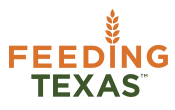For Immediate Release: 4/7/15
Contact: Celia Cole, 512.590.0659 or ccole@feedingtexas.org
Austin – Texas households suffered extraordinarily high rates of food hardship during and after the recession, according to a new national report released today. In 2014, 18.4 percent of surveyed households said they could not consistently afford enough food.
Federal lawmakers in the Senate and House have passed budgets that put nutrition programs such as SNAP (aka food stamps) at significant risk. Rates of food hardship will increase significantly if funding for these programs is reduced.
“It is unacceptable that Congress is debating cuts to nutrition programs like SNAP when so many Americans are struggling to afford food,” said Celia Cole, CEO of Feeding Texas. “SNAP is a proven tool to solve hunger. Our elected leaders should act to help, not hurt struggling families.”
The report, How Hungry is America?, is published by the national group the Food Research and Action Center (FRAC) in coordination with Gallup-Healthways Polling, and provides data on food hardship for the nation, every state, and 100 of the country’s largest cities. The report includes food hardship rates for San Antonio, Austin, Houston, and the Dallas-Fort Worth metroplex. Food hardship is defined as the inability to afford enough food. The report found a national food hardship rate of 17.2 percent in 2014.
“All these data tell the same story – hunger and poverty rates spiked at the beginning of the recession and have stayed high ever since,” said Cole. “Cutting nutrition programs now will lead to even greater hardship for millions of struggling Americans.”
Feeding Texas is urging concerned Texans to raise their voices and tell Members of Congress to strengthen – not weaken – the nation’s nutrition safety net. They can do so, for example, by adding their name to a petition in support of SNAP.
The full food hardship analysis and petition is available on FRAC’s website. Feeding Texas leads a unified effort for a hunger-free Texas.
